Tricky Tessellations
Can you work out the fraction of the tiles that are painted black in this pattern?
Problem
Image
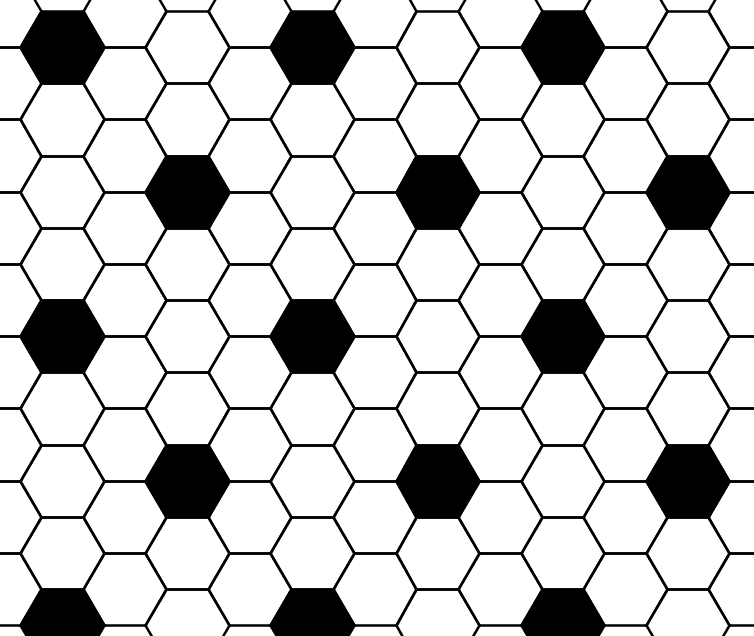
The figure shows part of a tiling, which extends indefinitely in every direction across the whole plane.
Each tile is a regular hexagon.
Some of the tiles are white, the others are black.
What fraction of the plane is black?
This problem is taken from the UKMT Mathematical Challenges.
Getting Started
Could you colour in some of the white hexagons...?
Student Solutions
If we can split the plane into a tesselation of identical tiles, then the proportion of each tile that is black will be the same as the proportion of the plane which is black. So we will count the proportion of each tile that is black.
We could use tiles that contain only whole hexagons, like the ones shown below. In each case, each tile contains 7 white hexagons and one black hexagon, so $\frac{1}{8}$ of each tile is black, so $\frac{1}{8}$ of the plane is black.
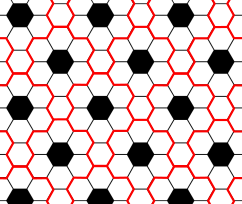

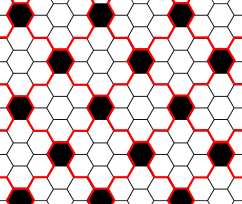
We could use tiles that contain only whole hexagons, like the ones shown below. In each case, each tile contains 7 white hexagons and one black hexagon, so $\frac{1}{8}$ of each tile is black, so $\frac{1}{8}$ of the plane is black.
Image

Image

Image

Alternatively, we could use tiles that contain fractions of hexagons which are easy to identify, like the ones shown below. Underneath each tiling is the number of white and black hexagons per tile. In each case, the proportion of each tile that is black, given by $\dfrac{\text{number of black hexagons}}{\text{total number of hexagons}},$ is $\frac{1}{8}.$
Image
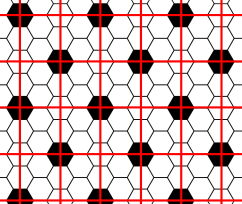
Image
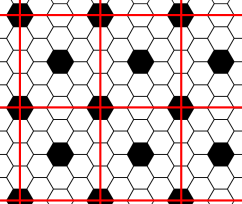
$2+ \frac{2}{2}+\frac{2}{4}=3\frac{1}{2}$ white hexagons and $10+\frac{8}{2}=14$ white hexagons and
$\frac{2}{4}=\frac{1}{2}$ black hexagon per tile $1+\frac{4}{4}=2$ black hexagons per tile
Image
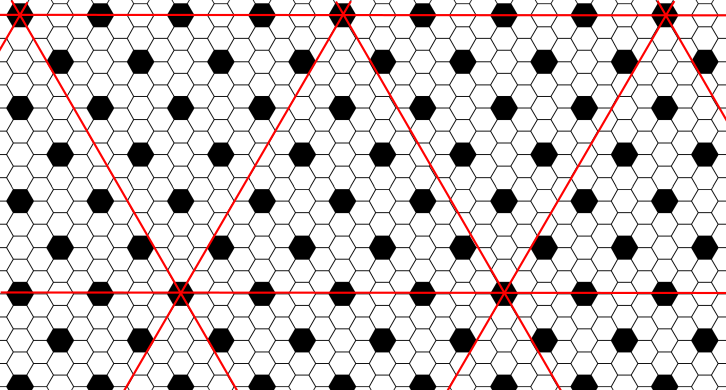
$75+\frac{18}{2}=84$ white hexagons and $10+\frac{3}{2}+\frac{3}{3}=12$ black hexagons per tile
